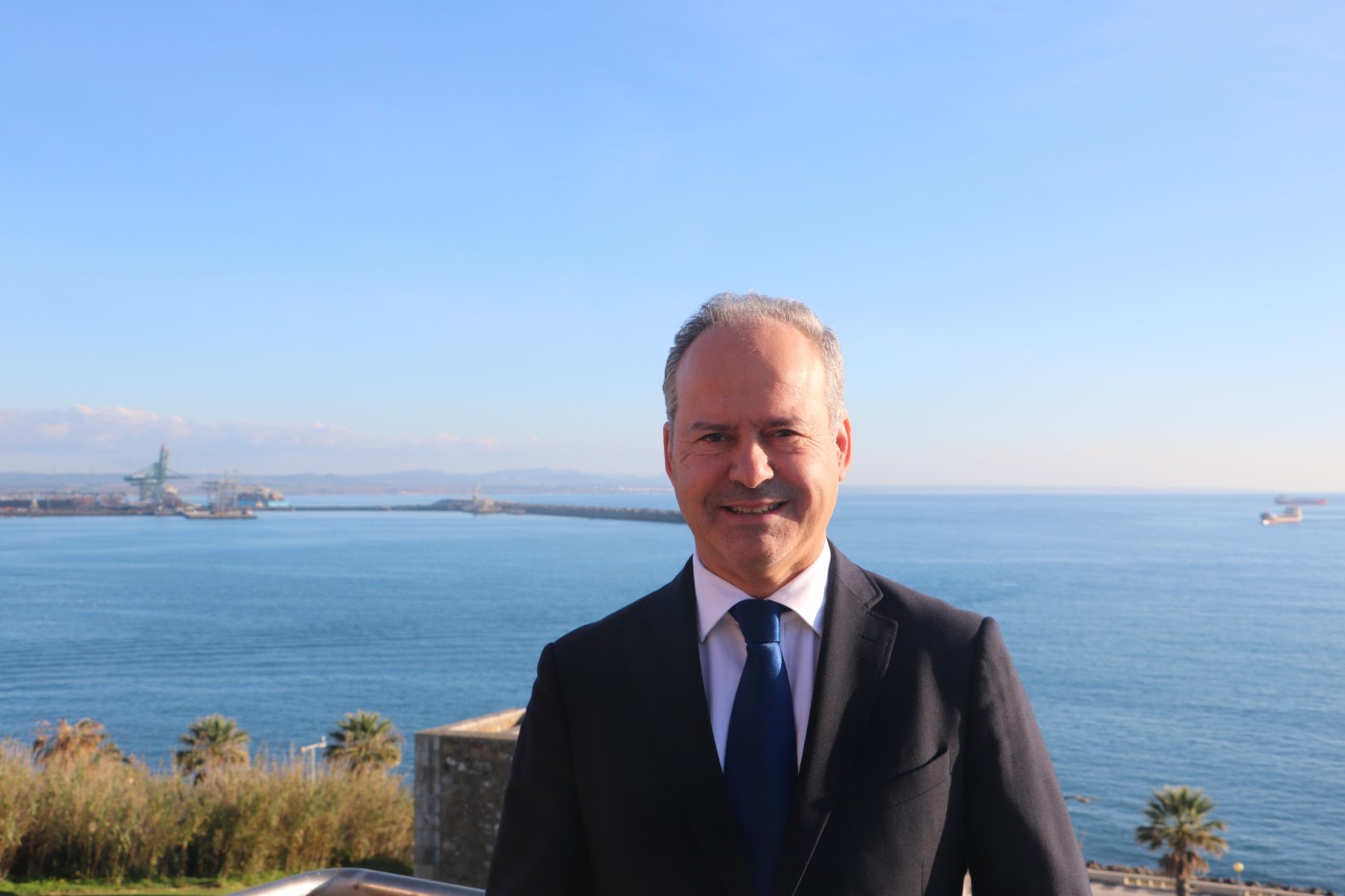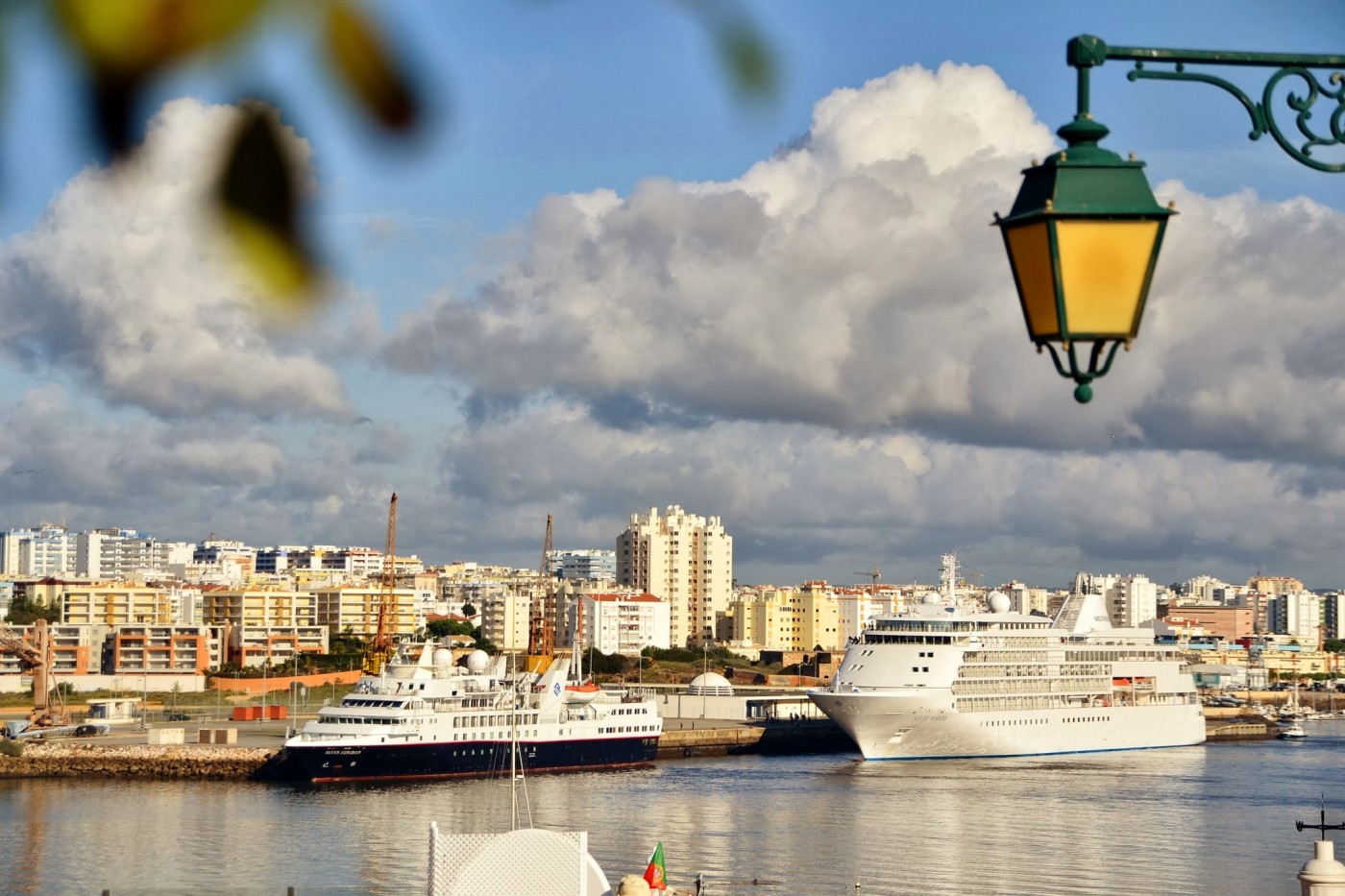29 May 2020
This month we talked to Mr. José Luis Cacho, President of the Ports of Sines and the Algarve (APS). He told us about his long-term vision for the ports, the impact of the COVID-19 crisis on the port sector, and shared his view on the role decarbonisation and digitalisation play in the ports. Read the whole interview below to see the other interesting topics he talked about!
Can you briefly tell us about the Ports of Sines and the Algarve? What are their main characteristics and challenges?
APS – Ports of Sines and the Algarve Authority manages the ports of Sines, Faro and Portimão, these two being located in the Algarve. While Faro is a very small general cargo port, endowed to serve the local hinterland, Portimão is the unique cruise port in the Algarve. Having registered 57 calls in 2019 and nearly 23.000 passengers, Portimão receives medium and small sized vessels, mostly luxury cruise vessels. Due to the difficult situation the cruise industry is presently facing, I would say that the main challenge for Portimão will be to regain calls, bringing back cruise vessels and passengers to the Algarve.
The Port of Sines is the country’s leading port in terms of total throughput, handling 50% of Portugal’s total volumes of cargo, while in containerised cargo particularly, Sines’ share goes up to 56%. Besides being the country’s leading supplier for energetic products, Sines also offers a strategic potential for the development of both the LNG and Hydrogen renewable markets. In fact, the unique LNG Terminal in the country is located at the Port of Sines, being responsible for nearly 90% of Portugal’s needs. We must also add that decarbonisation is setting a new scenario for the port, since we have almost completely stopped the handling of coal. In this way, one of our challenges is to enhance the Dry Bulk Terminal activity, and we have been working on attracting new businesses, especially in the agro-business. They would benefit from the excellent conditions offered by both the terminal and the Industrial and Logistics Zone which are located next to each other, with more than 4.000 hectares able to receive new investments.
Notwithstanding the remaining types of cargo, I must say that our main challenge is, in fact, containerised cargo. Sines offers a container terminal – Terminal XXI, operated by PSA Sines (part of PSA International), who is expanding the terminal, doubling its annual capacity to 4.1MTEU. Currently offering direct regular services to the international leading markets, Terminal XXI is endowed to be the Atlantic Hub par excellence, since it is the first deep water port in West Europe, offering -17mHZ.
Besides the expansion of Terminal XXI, the port authority has launched an international public tender for the construction and operation of a second container terminal – Terminal Vasco da Gama (TVG). Offering -20mHZ, TVG will offer a total capacity of 3.5MTEU.
I believe we can say that the sun will shine in Sines in the near future.
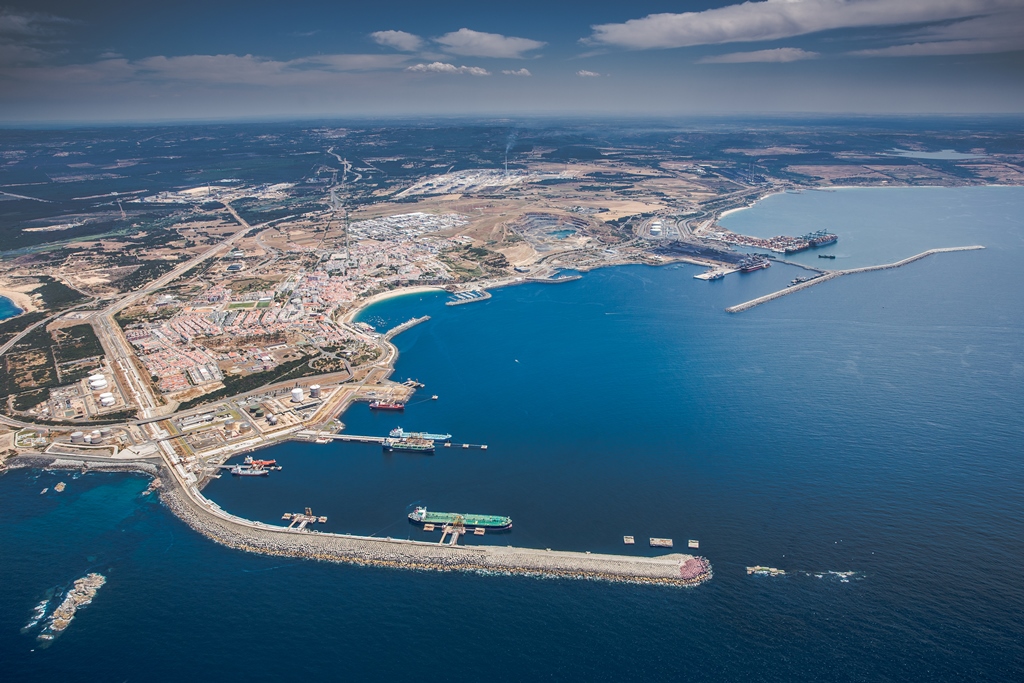
How did you get into maritime transport? How did your career path lead to this position?
My first professional approach to the port and maritime sector goes back to 1999, as Member of the Board of the Port of Aveiro. From 2005 to 2015 I was CEO of the Port of Aveiro and at the same time, from 2010 to 2013, I assumed the Presidency of the Portuguese Ports Association (APP) for the first time. In addition, in 2011 I also assumed the Presidency of the Association of Portuguese Speaking Ports (APLOP), which gathers a series of ports from countries like Brazil, Angola, Mozambique and Cabo Verde, among others, sharing the common goal to create synergies and promote commercial, technical and operational cooperation.
2016 brought me a new challenge – being the CEO of the Port of Sines, the biggest port in the country and, already, an important European port. As CEO of Sines I have also returned to the Presidency of APP last October.
My port journey continues and I am eager to lead the Port of Sines towards the top 10 league of the European Ports.
What is your vision for the Ports of Sines and the Algarve for the next decade?
I believe that in the next decade Sines will reinforce its position in Europe in containerised cargo, while playing an important role in cleaner and sustainable supplying solutions. Besides, we must also continue to enhance and improve our IT systems; port efficiency depends, more and more, on digitalisation and innovation, not only with regard to port operations but also along the entire logistics chain.
I must emphasise that Sines is also engaged in new projects of renewable sources, namely hydrogen as a product from the water electrolysis, offering the experience of more than 20 years with LNG terminals and their transhipment business, with a wide knowledge of different destinations as India, South America and Poland. LNG as a transition energy source is probably the best way to add some maritime and port’s experience in the renewable projects of liquified gases as the next hydrogen and mix gases.
The present pandemic scenario is also an excellent opportunity to upgrade decarbonisation measures and to reinforce the vertical chain of production and export in our region with new objectives. This means that we must have the ability to attract new factories and associated services to settle in our Industrial and Logistics Zone, with the privilege to import and export close to the port terminals. The agro-business is one of these new projects, benefiting also from the excellent conditions and experience offered by Portugal and, particularly, by the Alentejo region in the south, and close to an LNG compound that can be used as energy source.
At last, in the Algarve, we are confident that Portimão port will be the new touristic spot in the south of Portugal, combining the wonderful touristic conditions of Algarve with calls for medium and small sized pleasure vessels, mostly luxury cruise vessels and also ropax vessels that could be part of regular lines in the Gibraltar Strait, South of Spain, Madeira and Canary Islands. With this main goal, we intend to improve the maritime accessibility of the port to allow in the near future ships with more than 250 meters in length, with new equipment and personal support of the borders and customs authorities that can facilitate the incoming tours and visits.
Due to the pandemic crisis, this industry is presently facing a serious problem but we hope that the small and medium cruise ships and ropax vessels can soon be the business leverage key.
Therefore it’s our intention to make all the efforts, together with the municipality and regional authorities, to bring back and reinforce the Ro-Ro cargo and passengers businesses in Portimão, one of the most touristic and pleasant regions in the world, with excellent golf fields that have been internationally awarded several times: the Algarve.
The Port of Sines is an important cargo port in the region. What is the impact of the COVID-19 crisis on the traffic of goods?
The Port of Sines has been operating round-the-clock at 100%. In fact, we have closed the first quarter with a slight decrease of 7% compared to the same period last year, but April has already started to show signs of recovery, with numbers very close to last year’s results.
Situated in the beautiful Algarve region, the Port of Portimão is well-known as an attractive cruise destination. However, the cruise sector has been severely impacted by the COVID-19 crisis. What have been the challenges so far? What needs to be done for the sector to recover?
Portimão has canceled all the cruise calls due to COVID-19. Cruise business is in fact facing severe problems and the biggest challenge for all the players will be to empower this business again. I believe the answer to overcome this crisis is team work among all the players; all of us must do our share, helping each other to regain confidence and to start over again.
Recently, the Commission proposed an amendment to the Port Services Regulation to temporarily allow the reduction, deferral, suspension or waiver of port infrastructure charges, in response to the COVID-19 crisis. What were your concerns about the proposal?
The Portuguese ports have first shared their concerns in an internal ESPO meeting. We believe this amendment may hinder the ability of the Port Authorities to continue with the programmed investments, since it will represent a considerable loss for the global revenues of some ports. Plus, we must also stress that this amendment tends to hinder competition between member States and Ports within the European Union, something that the 2017 Regulation prevented by allowing no exclusions from the obligatory payment of port infrastructure charges.
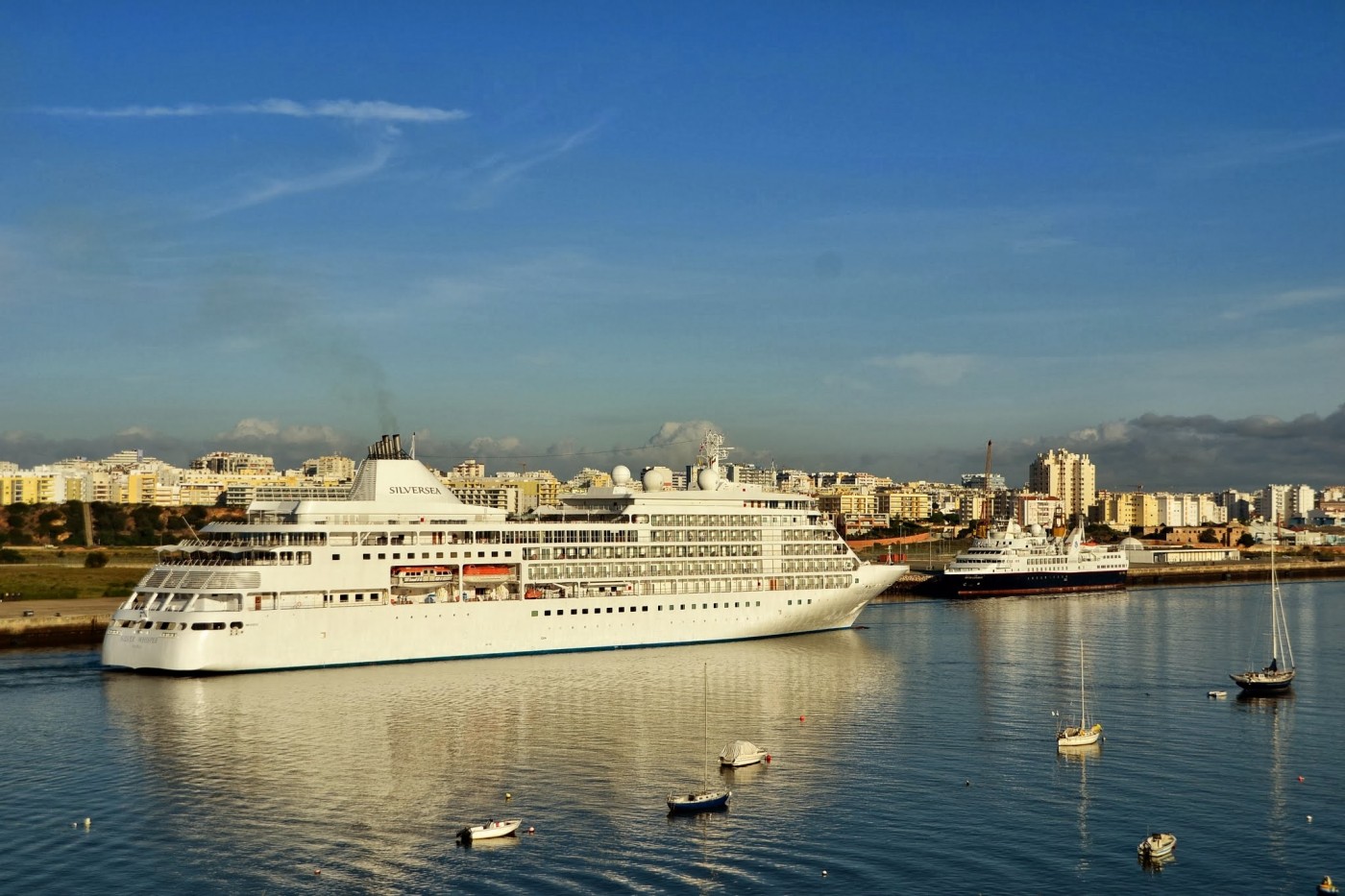
Due to the COVID-19 pandemic and its impact on global value and production chains, the debate on reshoring industry back to or closer to Europe gained a new momentum. Do you think that in time we will see a reshoring of industry closer to Europe?
Even though we are still living in great vulnerability and uncertainty due to the COVID-19, I believe this pandemic will contribute to the reshaping of globalisation as we know it. With the possibility of facing a long-term recession “around the corner”, I believe Europe will try to enhance its industrial autonomy, reshoring some manufacturing while diversifying supplying solutions. Europe will need to redefine its strategy towards the enhancement of its independence from third countries; synergies must be created among Member States in different business areas, thus aiming to reinforce the European economy.
The Port of Sines is located on the Atlantic Corridor of the Trans-European Transport Network (TEN-T). How has the Port benefitted from being part of this Corridor? What is the importance of EU funding for a Port like Sines?
The Port of Sines is a Western deep water European port, benefiting from its strategic location on the crossroads of the main maritime routes North-South and East-West. Sines benefits from this hub position, not only with regard to transhipment cargo, which represents about 70% of the total TEU handled, but also regarding the development of hinterland cargo. In fact, along with the expansion of Terminal XXI, the rail connection to the Spanish hinterland is being improved as part of the TEN-T network. Sines is already an important freight platform handling more than 6.000 container trains to/from Portuguese and Spanish Dry Ports. Plus, Sines is par excellence the port serving the Spanish Extremadura and Andalusia, and our goal is to increase our competitiveness towards the hinterland of Madrid. It is one of our goals to increase hinterland cargo, along with transshipment cargo; the development of the Atlantic Corridor will surely help us achieveg this goal.
European ports are increasingly investing in digital solutions to improve the efficiency of the logistics chain and port operations. Are the Ports of Sines and the Algarve taking any initiatives towards digitalisation? Do you think digitalisation can contribute to making port operations and the logistics chain more sustainable?
The Port of Sines has been leading the way towards technological development in the Portuguese Port Sector. Back in 2008 Sines headed the development of the JUP – Port Single Window, which has represented a tremendous contribution to ports’ efficiency; Portuguese ports are paperless, offering smooth, quick, safe and efficient operations. In 2013, the Port of Sines started to implement the platform which has led to what is now the JUL- Logistics Single Window. Being a strategic national project, the JUL broadens the scope of the JUP along the logistics chain, comprising also land means of transport (road and rail) thus allowing all the players to interact. Today, the port goes far beyond its terminals and quays, it spreads its influence along the hinterland and the foreland. Digitalisation and innovation are more and more key competitiveness factors; operational efficiency is no longer enough. Today, the ever more globalised market demands us to be quicker, smoother, smarter; all the logistics chains must be agile and constraint-free; today’s markets demand instant and efficient responses, innovative responses and it’s up to us to be creative, to re-invent solutions and develop the skills to give a proper, efficient, sustainable and competitive response.
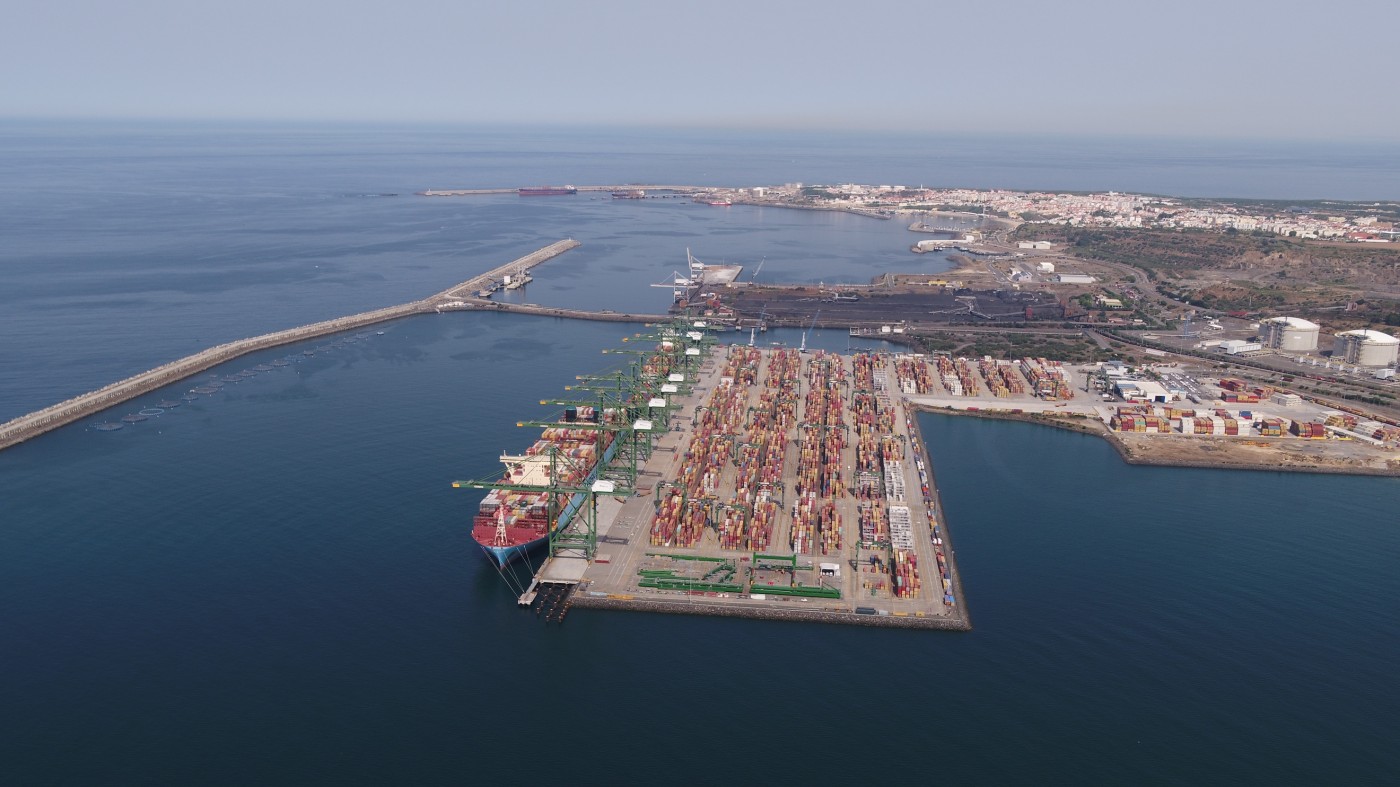
With its Green Deal, the EU aims to have a climate-neutral economy by 2050. How do you think the European port sector can contribute to decarbonising the logistics chain?
Ports are increasingly complex “entities”; some of them are important energy, industrial and “blue economy” clusters, along with their core activity of handling passengers and cargo, while acting as a connecting agent between the sea and the hinterland. Moreover, the “transformation” of ports into true hubs of innovation and digitalisation is growing. In addition, we must also not forget the key role of Port Communities in solving various constraints, whether they are bottlenecks in the hinterland, social or environmental issues.
In order to meet the EU's objective of reducing GHG emissions by 2050 to zero, integrated measures in the transport sector at European level should be defined, given the sector's relevance in this area. The Directive 2014/94 / EU on Alternative Fuels Infrastructure (AFID) is particularly important, since it aims to enable the use of alternative fuels such as LNG and OPS (Onshore Power Supply) as an important element in the energy mix.
In this context, the Portuguese Government launched in 2017 the LNG Maritime Roadmap for Portugal, where a set of infrastructure projects were identified for the settlement of a sustainable LNG market. The Portuguese government adopted a Strategy to increase the Competitiveness of Portuguese Ports, in which LNG is considered a strategic element.
In this particular case, Sines allows opportunities to explore and increase Portugal’s role as an LNG platform, not only for world trade, but above all as an alternative to regional trade in Europe.
In addition, and taking into account the continuing of the energy transition policy, the Portuguese government has recently presented the “Green Hydrogen Industrial Cluster in Portugal” project, which would have its focal point in Sines for the production of renewable hydrogen through the electrolysis of water achieved by solar energy received from photovoltaic panels.
The relevance and advantages offered by the Port of Sines to support and develop the implementation of that project are closely related to the availability of this type of terminals (tanking and gasification/liquefaction of combustible gases such as LNG), which allows the future use of other types of gases, such as liquefied hydrogen, which will be transported by sea.
On the other hand, I believe digitalisation will play a decisive role in this issue; the decarbonisation of the logistics chain will also depend on finding innovative and intelligent solutions for the transport sector. Given the central role of ports in the supply chain, state-of-the-art technological solutions will bring added value not only to port activities but also to the entire logistics chain at the global level.
The answer to the expected growth in traffic volumes no longer boils down to building and developing ports with greater capacity, a considerable effort must be made as well in terms of information systems in order to maximise the network of existing transport and connections. Plus, digitalisation also contributes to a far more transparent logistical process. Greater demand in maritime transport and increased economies of scale challenge the design of more agile logistics chains, while better information and communication systems make the interaction between different players along the entire logistics chain easier, thus enhancing their efficiency. In this way, digitalisation will be a very important tool in the process of decarbonising the transport system, since it will help to resolve inefficiencies and inaccuracies while increasing the transparency of the real “environmental footprint”.
Related documents
No attachments.

